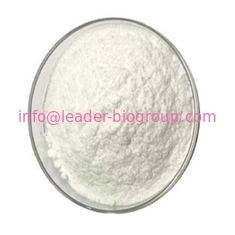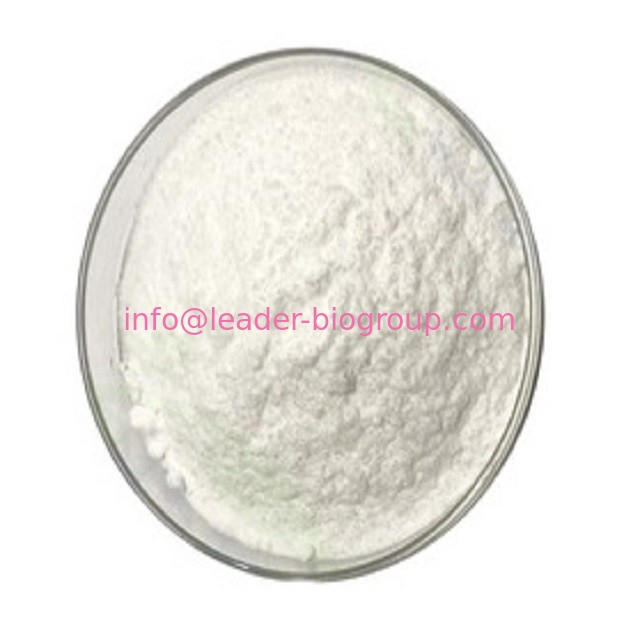
China Largest Factory Manufacturer L-Glutamine CAS 56-85-9 For stock delivery
-
Purity99.9%
-
UseHealth Care
-
OriginChina
-
Package1KG/Tin 25KG/Drum*Carton
-
ManufacturerXI'AN LEADER BIOCHEMICAL ENGINEERING CO.,LTD
-
Place of OriginCHINA
-
Brand NameLeader
-
CertificationISO,GMP,SGS,HALA,KOSER,HACCP
-
Model NumberLD
-
Minimum Order Quantity25KGS
-
PriceNegotiate Depend on order quantity
-
Packaging Details25KG/Drum
-
Delivery Time2-3 working days
-
Payment TermsWestern Union, MoneyGram, T/T, L/C
-
Supply Ability10MTS/Month
China Largest Factory Manufacturer L-Glutamine CAS 56-85-9 For stock delivery
| L-Glutamine Basic information |
| Product Name: | L-Glutamine |
| Synonyms: | 2,5-Diamino-5-oxpentanoicacid;LEVOGLUTAMIDE;L(+)-GLUTAMINE;L-GLUTAMINE;L(+)-GLUTAMIC ACID-5-AMIDE;L-GLUTAMIC ACID 5-AMIDE;L-GLUTAMIC ACID AMIDE;L-GLN |
| CAS: | 56-85-9 |
| MF: | C5H10N2O3 |
| MW: | 146.14 |
| EINECS: | 200-292-1 |
| Product Categories: | Inhibitors;Other APIs;Glutamine [Gln, Q];Amino Acids and Derivatives;alpha-Amino Acids;amino;Amino ACIDS SERIES;Food & Feed ADDITIVES;Amino Acids;Amino Acid Derivatives;Food & Flavor Additives;API's;Aliphatics;Amino Acids & Derivatives;Biochemistry;Nutritional Supplements;L-Amino Acids;Amino Acids;Hybridoma Media SupplementsCardiac Stem Cell Biology;Supplements&Reagents;Cardiac Stem Cell Expansion and Differentiation;Conditioned Media, Media Supplements and ReagentsSerum-free Media;Hybridoma Platform;Hybridoma Reagents;Reagents and Supplements;amino acid;amino acid series |
| Mol File: | 56-85-9.mol |
| L-Glutamine Chemical Properties |
| Melting point | 185 °C (dec.)(lit.) |
| alpha | 32.25 º (c=10, 2 N HCl) |
| Boiling point | 265.74°C (rough estimate) |
| density | 1.47 g/cm3 (20℃) |
| FEMA | 3684 | L-GLUTAMINE |
| refractive index | 6.8 ° (C=4, H2O) |
| Fp | 185°C |
| storage temp. | −20°C |
| solubility | H2O: 25 mg/mL |
| pka | 2.17(at 25℃) |
| form | solution |
| color | White |
| PH | 5.0-6.0 (25℃, 0.1M in H2O) |
| optical activity | [α]20/D +33.0±1°, c = 5% in 5 M HCl |
| Water Solubility | Soluble in water, dimethyl sulfoxide and ethanol. Insoluble in methanol, r, benzene, , ethyl acetate and chloroform. |
| λmax | λ: 260 nm Amax: 0.01 λ: 280 nm Amax: 0.01 |
| Decomposition | 185 ºC |
| JECFA Number | 1430 |
| Merck | 14,4471 |
| BRN | 1723797 |
| Stability: | Stability Moisture and light sensitive. Incompatible with moisture, strong oxidizing agents. |
| InChIKey | ZDXPYRJPNDTMRX-VKHMYHEASA-N |
| CAS DataBase Reference | 56-85-9(CAS DataBase Reference) |
| NIST Chemistry Reference | L-Glutamine(56-85-9) |
| EPA Substance Registry System | L-Glutamine (56-85-9) |
| Safety Information |
| Hazard Codes | Xi |
| Risk Statements | 36-36/37/38 |
| Safety Statements | 26-24/25-36/37/39-27 |
| WGK Germany | 2 |
| RTECS | MA2275100 |
| TSCA | Yes |
| HS Code | 29241900 |
| Toxicity | LD50 orally in Rabbit: 7500 mg/kg |
| MSDS Information |
| Provider | Language |
|---|---|
| 2-Aminoglutaramic acid | English |
| ACROS | English |
| SigmaAldrich | English |
| ALFA | English |
| L-Glutamine Usage And Synthesis |
| Description | L-glutamine (chemical formula: C5H10N2O3) is an alpha-amino acid that is one of the 20 amino acids consisting proteins. L-glutamine is a non-essential amino acids and is also the most abundant amino acids in human bodies. It is involved in many important biological processes. For example, it is a building block for the protein synthesis as one key amino acid; it is used in the biosynthesis of urea and purines for nucleic acid synthesis; it is a substrate for the biosynthesis of neurotransmitters; it is also an important sources of cellular energy generation. L-glutamine provides many benefits to the body such as improving gastrointestinal health, aiding the treatment of ulcer and leaky gut, promoting muscle growth, improving diabetes and blood sugar as well as aiding in the treatment of cancer. |
| References | https://en.wikipedia.org/wiki/Glutamine https://draxe.com/l-glutamine-benefits-side-effects-dosage/ https://pubchem.ncbi.nlm.nih.gov/compound/5961#section=Interactions |
| Description | Glutamine (abbreviated as Gln or Q) is one of the 20 amino acids encoded by the standard genetic code. It is not recognized as an essential amino acid, but may become conditionally essential in certain situations, including intensive athletic training or certain gastrointestinal disorders.Its side-chain is an amide formed by replacing the side-chain hydroxyl of glutamic acid with an amine functional group, making it the amide of glutamic acid. Its codons are CAA and CAG. In human blood, glutamine is the most abundant free amino acid, with a concentration of about 500–900 μmol / l . |
| Chemical Properties | White crystalline powder |
| Chemical Properties | White, odorless crystals or crystalline powder having a slightly sweet taste. It is soluble in water and practically insoluble in alcohol and in r. Its solutions are acid to litmus. It melts with decomposition at about 185°C. |
| Chemical Properties | L-glutamine is odorless, but has a slightly sweet taste L-glutamine performs a major role in DNA synthesis and sup- ports the immune system by means of glutathione synthesis. |
| Occurrence | Occurrences in nature Glutamine is the most abundant naturally occurring, nonessential amino acid in the human body, and one of the few amino acids that can directly cross the blood-brain barrier.In the body, it is found circulating in the blood, as well as stored in the skeletal muscles. It becomes conditionally essential (requiring intake from food or supplements) in states of illness or injury.Dietary sources Dietary sources of L-glutamine include beef, chicken, fish, eggs, milk, dairy products, wheat, cabbage, beets, beans, spinach, and parsley. Small amounts of free L-glutamine are also found in vegetable juices. Aiding gastrointestinal functionGlutamine-enriched diets have been linked with maintenance of gut barrier function and cell differentiation, suggesting glutamine may help to protect the lining of the gastrointestinal tract or mucosa. People who have inflammatory bowel disease (ulcerative colitis and Crohn' s disease) may not have enough glutamine, but two clinical trials found taking glutamine supplements did not improve symptoms of Crohn' s disease. |
| Uses | L-Glutamine is an essential amino acid that is a crucial component of culture media that serves as a major energy source for cells in culture. L-Glutamine is very stable as a dry powder and as a frozen solution. In liquid media or stock solutions, however, L-glutamine degrades relatively rapidly. Optimal cell performance usually requires supplementation of the media with L-glutamine prior to use. |
| Uses | L-Glutamine is one of the 20 amino acids encoded by the standard genetic code. Its codons are CAA and CAG. Glutamine is a substance naturally produced in the body to help regulate cell growth and function. There may also be man-made versions of these subs |
| Uses | amine protecting agent |
| Definition | ChEBI: An optically active form of glutamine having L-configuration. |
| Preparation | By isolation from sugar beet juice. |
| Brand name | Nutrestore (Nutritional Restart). |
| Biological Functions | Glutamine plays a role in a variety of biochemical functions, including : Protein synthesis, as any other of the 20 proteinogenic amino acids Regulation of acid-base balance in the kidney by producing ammonium Cellular energy, as a source, next to glucose Nitrogen donation for many anabolic processes, including the synthesis of purines Carbon donation , as a source , refilling the citric acid cycle Nontoxic transporter of ammonia in the blood circulation. |
| Synthesis Reference(s) | Tetrahedron: Asymmetry, 17, p. 245, 2006 DOI: 10.1016/j.tetasy.2005.12.023 Journal of the Chemical Society, p. 3315, 1949 DOI: 10.1039/JR9490003315 |
| Safety Profile | Mddly toxic by ingestion. Human systemic effects: euphoria. When heated to decomposition it emits toxic fumes of NOx. |
| Veterinary Drugs and Treatments | Glutamine has been used as a GI protectant and in an attempt to enhance GI healing in conditions where GI epithelium is damaged (Parvo enteritis, chemotherapy, etc.). A study that evaluated the efficacy of glutamine supplementation in cats with methotrexate-induced enteritis found no difference between cats supplemented with glutamine and those that were not. (Marks, Cook et al. 1999) |
| Purification Methods | Likely impurities are glutamic acid, ammonium pyroglutamate, tyrosine, asparagine, isoglutamine, arginine. Crystallise it from water or aqueous EtOH. [Greenstein & Winitz The Chemistry of the Amino Acids J. Wiley, Vol 3 pp 1929-1925 1961, Beilstein 4 IV 3038.] |
| Producing and consuming organs | Producers Glutamine is synthesized by the enzyme glutamine synthetase from glutamate and ammonia. The most relevant glutamine-producing tissue is the muscle mass, accounting for about 90% of all glutamine synthesized. Glutamine is also released, in small amounts, by the lung and the brain. Although the liver is capable of relevant glutamine synthesis, its role in glutamine metabolism is more regulatory than producing, since the liver takes up large amounts of glutamine derived from the gut. Consumers The most eager consumers of glutamine are the cells of intestines, the kidney cells for the acid - base balance, activated immune cells, and many cancer cells. In respect to the last point mentioned, different glutamine analogues, such as DON, Azaserine or Acivicin, are tested as anticancer drugs. Examples for the usage of glutamine In catabolic states of injury and illness, glutamine becomes conditionally essential (requiring intake from food or supplements). Glutamine has been studied extensively over the past 10–15 years, and has been shown to be useful in treatment of injuries, trauma, burns, and treatment - related side effects of cancer, as well as in wound healing for postoperative patients. Glutamine is also marketed as a supplement used for muscle growth in weight lifting , body building, endurance, and other sports. Evidence indicates glutamine, when orally loaded, may increase plasma HGH levels by stimulating the anterior pituitary gland. In biological research, L-glutamine is commonly added to the media in cell culture. However, the high level of glutamine in the culture media may inhibit other amino acid transport activities. |
| L-Glutamine Preparation Products And Raw materials |
| Raw materials | Carbon disulfide-->L-Glutamic acid-->Metaclazepam-->L-Glutamic acid 5-methyl ester-->Octanoic hydrazide-->Carbodithioic acid |
| Preparation Products | (2S)-2-amino-3-(5-bromo-)propanoic acid-->5-Methyl-L-tryptophan-->N-Acetyl-L-glutamine |
